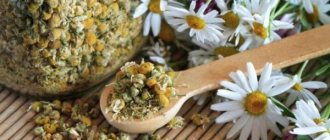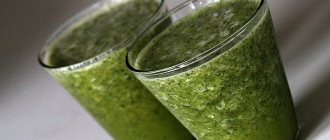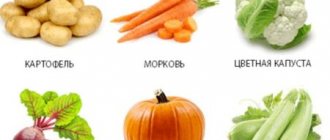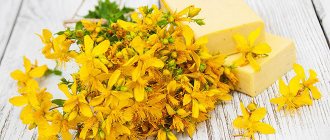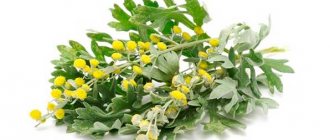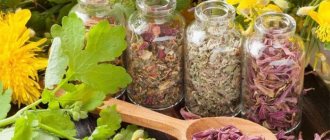Herbal remedies for the pancreas are often prescribed even by doctors as an auxiliary therapy, so you should not be skeptical about them. There are many options for preparing such a medicine, and every patient will be able to choose something for themselves. You can either collect the herbs for preparing remedies yourself or buy them in ready-made form in pharmacies.
Causes and symptoms of inflammation
Inflammatory phenomena in the pancreas can occur for certain reasons, which include:
- excessive consumption of alcoholic beverages;
- disturbances in the functioning of the gallbladder;
- gastroduodenitis, acute duodenitis;
- hereditary predisposition;
- nervous disorders, severe stress;
- obesity;
- poor nutrition;
- endocrine pathologies;
- ulcers of the stomach, duodenum;
- prolonged use of potent chemicals;
- some infectious diseases;
- autoimmune pathologies.
Symptoms of acute inflammation are quite intense:
- constant pain in the left and right hypochondrium of a girdling nature, which can radiate to the area of the shoulder blades, back, sternum;
- vomiting, nausea;
- bloating;
- stool disorders (constipation, diarrhea);
- belching, heartburn.
The main pathologies of the pancreas are diabetes mellitus and pancreatitis. With such diseases, severe dry mouth is observed, which does not disappear even after taking fluids.
Properties of calendula
This plant is used to treat the pancreas, as it is characterized by a number of beneficial properties:
- bactericidal;
- antispasmodic;
- choleretic;
- anti-inflammatory;
- regenerating.
You need to pay attention to contraindications. Calendula for pancreatitis is not used during pregnancy, if there is a tendency to allergies, or with concomitant diseases: stomach ulcers, heart rhythm disturbances, hypotension. You should not drink calendula-based medications if you are already taking mint tea, lemon balm, and decoctions of other plants that have a calming effect.
If you are deciding which herbs will help alleviate the condition of the inflammatory process in the pancreas, you should pay attention to calendula.
The recipes are as follows:
- Infusion. Teas cause less harm than alcohol tinctures, so preference is given to herbal water for treating the pancreas. Prepare 2 tsp. flowers, 500 ml boiling water. The components are connected and closed. Plants should be allowed to steep for 60 minutes. The medicine is drunk in small portions 1 day.
- Make a more concentrated infusion: take 2 tbsp. l. raw materials, 250 ml boiling water. The product should be cooked in a water bath for 30 minutes. The infusion is filtered and brought to the original volume by adding water. Directions for use: 1 tbsp. l. means three times a day.
- Decoction: 2 tbsp. l. raw materials (marigold inflorescences), 500 ml of boiling water. The mixture is left on the fire, removed 5 minutes after it boils. Take the medicine three times a day, 1/3 tbsp.
- Herbs for the pancreas and liver are used not only in the form of decoctions, infusions, but also in the form of oil. The medicine is prepared in a glass container. It is filled 3/4 full, olive oil is added so that it covers the raw materials to the top. The product should be infused for 10 days, the container is left in a cool place and shaken periodically.
Important information: Can a person live without a pancreas?
Complex therapy of pathology
The use of herbs and herbs for the pancreas is not the main treatment, but it has a beneficial effect on the body as a whole (reducing the severity of inflammation, removing toxins, cleansing blood vessels). Herbal medicine is complementary in nature, that is, it is used as an auxiliary technique in the main therapy. Therefore, before using the selected recipe, it is recommended to consult a doctor.
What herbs are used in preparations for the pancreas?
Contraindications and side effects
The substances contained in immortelle are low-toxic, but with prolonged use (more than 3 months) they can cause congestion in the liver. Patients with arterial hypertension should consult a doctor before taking this medicinal herb, as in some cases taking it may cause a slight increase in blood pressure.
Taking immortelle is contraindicated in the following cases:
- Individual intolerance;
- The presence of mechanical obstacles to the outflow of bile (large stones, a large number of stones, strictures of the bile ducts, etc.);
- Gastritis with high acidity;
- Pregnancy (can only be used on the recommendation of a doctor).
List of medicinal herbs
With such diseases of the pancreas, including pancreatitis, characteristic symptoms appear in the form of nausea, indigestion, vomiting, flatulence, intense pain, and constant weakness. The use of herbal teas is effective in complex treatment, subject to mandatory consultation with a specialist. The following medicinal plants are used:
- series;
- chamomile;
- parsley;
- blueberry;
- peppermint;
- immortelle;
- yarrow;
- elecampane;
- wormwood;
- St. John's wort.
From these plants you can prepare suitable mixtures for the treatment of a particular pathology.
Effective home recipes for inflammatory processes
You can prepare most herbal preparations, including traditional medicine, at home. Among the most effective and safe recipes:
- Mix one part each of dried cucumber, calendula and peppermint, add one and a half parts of yarrow. Pour two tablespoons into half a liter of water, heat over low heat for fifteen minutes and leave for an hour. Divide the composition into two doses, morning and evening.
- Mix three parts each of cumin seeds and dried nettle, add one part each of valerian, calamus and yarrow. Pour five grams of the mixture into a glass of water and boil for half an hour over low heat. Divide into three doses for use throughout the day.
- Mix thirty grams of peppermint and dill, add ten grams of immortelle and chamomile, as well as twenty grams of hawthorn fruit. Pour a glass of boiling water and leave for two hours. Divide into two doses.
- Mix a teaspoon each of St. John's wort, violet, linden, peppermint and chamomile. This composition must be poured with boiling water and consumed three times daily instead of regular tea.
Chamomile and immortelle
This plant is often included in herbal preparations for the pancreas. Chamomile promotes a beneficial effect on the activity of the pancreas in the form of antispasmodic, anti-inflammatory and antioxidant effects. Tea made from the leaves of this plant is very popular. Dry chamomile leaves are poured with boiling water and infused for 10–15 minutes. The product is added to tea for a preventive effect.
Immortelle is most effective in tincture form. The leaves of this medicinal plant (2 tablespoons) are poured with 1 liter of water and kept on fire until boiling. This tincture should be taken warm three times, 100 ml per day before meals.
Herbal infusions for the pancreas should be prescribed by a doctor.
Herbal infusions with wormwood
If there are no contraindications, various herbs are used, including those with bitterness. For example, yarrow, mint, wormwood, etc. Effective recipes:
- First, the raw materials are prepared. Take calendula and St. John's wort, wormwood, elecampane, sage, chamomile, string, marsh grass and horsetail, and also large burdock. All components are used in equal quantities. To prepare the daily dose of the medicine, take 1 tbsp. l. collection, add 220 ml of hot water. The product should be infused in a water bath for 15 minutes. After this, the medicine is removed from the stove and left for 45 minutes. Next, filter and drink 100 ml of the decoction three times a day before meals.
- For pancreatic diseases, iris is used in combination with wormwood. The components are taken in equal parts, mixed, after crushing. To prepare medicine for pancreatitis, use 1 tbsp. l. mixture, pour 220 ml of boiling water over it. The product is infused for 1 hour, after closing the container, then filtered. You need to take the medicine before meals, 1/2 tbsp. three times a day.
- Use a collection of herbs for pancreatitis. Prepare the raw materials (yarrow, mint, fennel and immortelle flowers), all components are taken in equal parts, but to prepare the daily dose of the medicine, use 1 tbsp. l. mixture, it must be filled with boiling water (220 ml). The product is prepared in a water bath for 15 minutes. Then it should brew. To do this, close the broth and leave for 35 minutes. It is filtered before use. Drink this medicine three times a day, 100 ml.
Herbal tea for the pancreas
To treat diseases of this organ, you can use a herbal collection that is sold in a pharmacy. One of these remedies is the collection “For pancreatitis” from pharmacological. It contains the following elements:
- Anise fruits have antispasmodic and anti-inflammatory properties, and also have a bactericidal effect on the mucous membranes of the digestive organs and respiratory tract. It is used to relieve pain, as a diaphoretic, and has a mild laxative and antiseptic effect. What else does this herbal collection for the pancreas contain?
- Bean shells, which contain a large amount of useful substances - proteins, microelements, vitamins, amino acids and flavonoids. The presence of bean leaves in the collection of herbs leads to normalization of metabolism, improves protein synthesis, stimulates the production of enzymes, and provides elasticity to blood vessels. The action of this plant includes the formation of insulin, normalization of water-salt balance and sugar levels, which is very useful for diseases of such an organ as the pancreas. The composition of the collection for the treatment of pancreas is unique.
- Corn silks. The widespread use of corn silk is due to the presence in them of fatty oils, ascorbic acid, vitamin K, saponins, starch and selenium. Due to the ability of these elements to stop inflammatory processes, their use is recommended for inflammation of the pancreas and urinary tract, for the prevention of malignant processes.
- Dandelion root. This medicinal component of the collection for pancreatic pancreatitis acts as a mild laxative, stimulates appetite, helps normalize digestion in certain pathologies of the stomach and pancreas, has a choleretic effect, helps restore electrolyte balance, balances intestinal microflora, and has a beneficial effect on the motor and secretory functions of the digestive tract.
- Knotweed grass is an element that contains many vitamins, fiber, protein, resin, sugar, tannin, carotene, pectin and silicon. This plant perfectly removes toxins from the body and has a positive effect on the blood and digestive processes.
- Violet grass. This plant has diaphoretic, blood purifying, anti-inflammatory, antispasmodic, diuretic, antipyretic and healing properties. It is widely used to treat a variety of pathologies, including pancreatic diseases.
- The herb St. John's wort is often included in preparations for the liver and pancreas. This medicinal plant contains nicotinic and ascorbic acids, flavonoid compounds (quercetin, rutin), saponins, sugar, carotene, hypericin, tocopherol, cetyl alcohol, hyperoside, choline, phytoncides, as well as resinous, tannin and bitter substances. These components make it possible to use this plant to achieve antibacterial, analgesic, antiseptic, wound healing, diuretic, choleretic, antirheumatic, astringent and anthelmintic effect, as well as as a regenerating agent.
The peculiarities of this herbal collection are that it acts comprehensively on the entire digestive system and produces bile, which together has a positive effect on the pancreas itself.
Uses of wormwood
Herbal treatment is not always beneficial; such remedies sometimes cause harm. You should pay attention to contraindications. Restrictions on the use of wormwood:
- increased acidity of gastric juice;
- pregnancy, lactation period;
- exacerbation of diseases of the digestive tract;
- damage to the nervous system;
- thrombophlebitis.
However, wormwood does much more good than harm for pancreatitis. It is characterized by a number of healing properties: diuretic, anti-inflammatory, antispasmodic, tonic, analgesic. In addition, it has a bactericidal effect and reduces the risk of tumor development. If pancreatitis is diagnosed, herbs for treatment must be collected within a certain period.
For example, wormwood is harvested before the flowering stage - in June.
In order for the grass to retain its properties for a long time, it must be dried. The temperature should not exceed 50°C, since under the influence of intense heat the essential oils in the composition evaporate. You can treat the pancreas with decoction and infusion. In both cases, only wormwood is used. Treatment of pancreatitis with herbs is carried out using dry and fresh raw materials. If freshly picked wormwood is used, take twice as many leaves as when using dry raw materials. Infusion recipe:
- Take 1/2 tbsp. l. dry wormwood, 220 ml hot water.
- The components are combined in an enamel bowl and sealed. In such a container, oxidation will occur less intensely.
- The product is infused for half an hour, then it must be strained.
You need to drink medicine for the pancreas before meals, 1 tbsp. l. Recipe for the decoction:
- Take 1/2 tbsp. dry wormwood, 220 ml boiling water.
- The components are combined and boiled over low heat for 20 minutes. The container must be enameled.
Important information: What medications to take when the pancreas hurts and how to relieve pain
This tea is very useful for the pancreas; drink 1 tbsp. l. three times a day. Alcohol tinctures are used less frequently during the treatment of pathological conditions of this organ. If you plan to treat the pancreas with herbs, you need to consider products that include wormwood, but as an auxiliary component.
Collection No. 2
Pharmacy collection for the pancreas is intended for the treatment of diseases of the pancreas, as well as for their prevention. This remedy promotes the enzyme pancreatin, necessary for the digestion process, relieves inflammation and normalizes the functions of the gland, resolves its seals. Collection No. 2 has a comprehensive healing effect. It normalizes motor skills and secretory functions, relieves pain, and has a restorative effect on the digestive system.
It contains the following medicinal plants: bean leaves, agrimony grass, galega grass, elecampane roots, centaury herb, Sophora fruits, three-leaf watch grass, lingonberry leaves, tuberiferous zopnik herb, dried food Jerusalem artichoke, aralia roots, blueberry fruits.
To prepare the medicine, you need to pour 1 tablespoon of this herbal mixture into 0.5 liters of boiling water, wrap it, leave for one hour, strain. Take 0.5 cups warm half an hour before meals 4 times a day, the last time just before bed. The packaging of the herbal mixture is designed for a monthly course of administration.
Collecting for pancreatic disease can be very effective.
Pharmaceutical preparations based on immortelle
In pharmacies you can purchase preparations based on sandy immortelle. Their use should always be recommended only by a doctor.
Dry immortelle extract (in powder or granule form)
In powder form, this drug is recommended to be taken 1 g three times a day, half an hour before meals for 2-3 weeks. If necessary, the course of treatment can be repeated after 5 days.
In the form of granules, immortelle extract is used to prepare a suspension and is more often used in pediatric practice. Add cold boiled water (to the 100 ml mark) to the container with granules and shake until all granules are completely dissolved. Take the suspension half an hour before meals in the dosage indicated in the instructions for the drug for each age group. The duration of treatment can be from 10 to 40 days.
Flamin
This drug is available in tablet form. Adults are recommended to take 1 tablet three times a day, half an hour before meals. If necessary, the dose can be increased to 2 tablets 2-3 times a day. Children 5-10 years old are recommended 1 tablet per day, and children 10-14 years old - 1 tablet 2 times a day. The duration of treatment is usually 10-40 days.
Ziflan
This drug is available in capsule form. It is not recommended for use in children under 12 years of age. For the rest, Ziflan is prescribed 1 capsule 2-3 times a day with meals. The duration of treatment is determined by the indications for use and can range from 15 to 30 days.
Choleretic herbs for pancreatitis
Quite often, pancreatitis is accompanied by cholecystitis, because in the digestive system of the body all organs are interconnected. This occurs due to the fact that the bile ducts are located next to the gland, so the inflammatory process often affects this area.
The herbal complex for pancreatitis should include plants that have a choleretic effect in order to normalize the secretion of bile, which is responsible for the breakdown of fats.
One of the most famous complexes of choleretic action is a mixture of mint, string and elecampane. The composition is poured with a glass of boiling water, wrapped and infused for 8 hours. Take the medicine chilled, one-third of a glass before meals. Medicinal plants such as corn silk, immortelle, knotweed, red rowan, etc. also have choleretic effects. Choleretic collection for pancreatitis cannot be used if there are stones in the gallbladder, as this can aggravate the situation and lead to complications.
Herbs for treating pancreas
Treatment of the pancreas with herbs has been known since ancient times. Nowadays, herbal medicine has not lost its relevance. On the contrary, it is very popular as an auxiliary treatment method.
What herbs can be used to treat the pancreas? This question is asked by many people who are faced with diseases of this organ. Below are the most effective herbal remedies that will help relieve inflammation in the pancreas.
Sophora japonica
A medicinal herb known for its antimicrobial properties.
Sophora japonica relieves pain, promotes tissue regeneration, normalizes digestion
To prepare a medicinal infusion, you need to put 20 grams of dry herbs in a thermos, add 200 ml of hot water, leave to infuse for 6 to 8 hours, and after this time, strain.
Drink the finished infusion a quarter glass throughout the day. The duration of therapy is 10 days. After a 21-day break, you can repeat the course of treatment.
Dandelion
Dandelion promotes insulin production and has a mild sedative effect on the central nervous system.
To prepare a medicinal infusion, you need to pour 50 g of pre-crushed roots into 300 ml of hot water. Leave for at least 2 hours.
Take 100 ml orally before breakfast, lunch and dinner. The course of treatment is 10 days.
Chamomile
This plant relieves inflammation and reduces the severity of pain.
The decoction is prepared from 20 grams of phytomaterial and 200 ml of water. Chamomile is poured with water and boiled for 10-15 minutes. The cooled broth is diluted in half with boiled water and drunk 15 minutes before meals. The duration of treatment is 14 days.
Immortelle
Immortelle improves the composition of bile, promotes its removal from the bladder, and promotes the normal functioning of the pancreas. Take dry phytomaterial, pour boiling water, cover with a lid and leave until completely cool. Take 100 ml orally before meals.
Treatment of pancreatitis with immortelle infusion should be continued for one to three weeks.
Tincture of calendula
Calendula is an effective remedy for the treatment of the gallbladder, which can also be used to treat pancreatic diseases. Medicinal decoctions help relieve even severe pain.
Calendula tincture provides excellent results for the treatment of pancreatic diseases.
To prepare it, you need to take 2 tablespoons of leaves, pour 500 ml of boiling water, leave until it cools completely. The finished infusion is filtered through cheesecloth and consumed during the day, 50 ml before meals. The duration of treatment varies from 7 to 10 days and depends on the severity of the disease and symptoms.
Blueberry
Blueberry leaves have a tanning effect, and the berries provide an enveloping effect.
You need to take 30 grams of berries and pour 200 ml of boiling water. Give it a chance to brew. Drink the infusion 3 times a day for 20 minutes. before meals.
A decoction of the leaves also has beneficial properties. They are cut, pour 200 ml of boiling water and leave for 40 to 60 minutes. After filtering, you should drink 100 ml of the product throughout the day. Daily dosage - 600 ml.
The duration of treatment for pancreatitis is 10 days.
Peppermint
Peppermint herb is one of the best sedatives
In addition, it has a diuretic and diaphoretic effect. Promotes the removal of bile and has a beneficial effect on the pancreas. Mint decoction is most effective for treating pancreatitis.
You will need 1 teaspoon of fresh or dried herb and 500 ml of water. Place on low heat and boil for 15 minutes. Drink 100 ml in 15 minutes. before meals 3 times a day.
Yarrow
It has a bactericidal, regenerating, antiallergic effect. Take 2 tablespoons of dry herb, pour 2 liters of boiling water. Cover the container tightly with a lid, leave for 8 hours, then strain. Take 100 ml before meals 2 times a day for 10 days.
Wormwood
Relieves inflammation, pain, improves digestion, normalizes stool
To prepare the decoction, take a tablespoon of wormwood, previously crushed in a coffee grinder, pour 200 ml of boiling water and put on fire for 5 minutes. boil. Take 20 ml before meals.
The duration of treatment is 2 weeks.
Cryphaea
Has a beneficial effect on the functioning of the liver and pancreas. However, it is very rare to find it on sale, because... The plant is quite difficult to obtain. The tincture must be prepared according to the strict recipe included with the medicinal moss.
Taken 1 to 1.5 months before meals. Helps with inflammation and severe pain of the pancreas.
Tibetan tea
Tibetan tea is considered to be a reliable remedy for the treatment of pancreatic pathologies
Suitable for preventive use. The composition includes chamomile, birch buds, immortelle, St. John's wort. To brew tea, you need to prepare a spoon of herbal tea, which is poured with 500 ml of boiling water.
Leave for 7 to 10 minutes. Take 50 ml before meals.
Tibetan collection
This medicinal collection has gained popularity due to its wide spectrum of action: it eliminates various inflammatory processes, is famous for its diuretic and choleretic effects, and helps normalize digestive functions.
It contains a complex of herbs: birch buds, St. John's wort, immortelle and chamomile. You can buy this product at any pharmacy and prepare it at home. To do this, you need to take 100 g of each component, thoroughly chop and mix. For making tea 1 tbsp. l. pour 200 ml of boiling water. It is recommended to take Tibetan tea for the treatment and prevention of gland diseases, one glass before bed with the addition of honey.
Properties of base components
Each herb individually has its own properties that are beneficial for digestion in conditions of inflammatory processes. When collected, they can enhance beneficial qualities, which is why it is recommended to group them.
Beneficial properties of the most commonly used herbal ingredients:
- Dandelion root and leaves . As part of medicinal preparations, it improves digestion and appetite, promotes the production of bile and the removal of excess fluid from the body.
- Immortelle . It has bactericidal properties, relieves pain and spasms, relieves inflammation and improves bile production.
- Calendula . Relieves inflammation and spasms, improves the production of enzymes, has a diuretic and choleretic effect. Collections with calendula improve digestive processes, regulate the production of gastric juice and accelerate tissue healing.
- Elecampane . Normalizes metabolic processes, relieves spasms and eliminates excess fluid from the body, increases the level of immunity.
- Mint . Eliminates nausea, calms, relieves pain, improves bile flow and gastrointestinal function.
- Series . Prevents abscesses and relieves inflammation, regulates appetite, improves metabolism, removes toxins from the gastrointestinal system.
- Dill seeds . Replenishes vitamins and minerals, has a calming effect, relieves pain, relieves inflammation and spasms.
Monastic tea for pancreatitis
For pancreatitis, monastery tea is often used, which helps stimulate the functioning of the internal secretion organs and is effective in complex forms of the disease. It has a synergistic and antispasmodic effect, effectively improves the functioning of the digestive tract, reduces acidity, eliminates pain, fights symptoms of intoxication in the body, and compensates for endocrine insufficiency.
This herbal mixture for the pancreas contains: sage leaves, wormwood, elecampane, chamomile flowers, calendula flowers, string and other plants.
Pharmaceutical herbal infusions
Many herbs for the pancreas are used to prepare pharmaceutical preparations. Ready-made preparations help get rid of such unpleasant symptoms as nausea, vomiting, cramps, inflammation, a feeling of fullness in the stomach, bloating, and stool disorders.
Any herbal collection should be used after consultation with a doctor, having first studied the instructions for use.
Below are the most popular fees with a balanced composition.
- Collection No. 1. It contains chamomile, mint, immortelle flowers, rhizomes of calamus and valerian. To prepare the infusion, you need to pour 1 tablespoon of collection No. 1 with 300 ml of boiling water. The cooled product is taken in the morning and evening after meals.
- Collection No. 2. Contains hop cones, chamomile, tansy flowers, josters, corn silks and columns. To prepare the infusion, you will need a tablespoon of herbal tea and 200 ml of boiling water. Leave for 1.5 to 2 hours, take before meals 5 times a day.
- Collection No. 3. The composition includes calendula, marshmallow root, and cinquefoil roots. Pour 1 tablespoon of the collection into 150 ml of boiling water, boil for 7-8 minutes, then remove from the stove and leave until completely cool. Take 50 ml 3 times a day after meals.
- Collection No. 4 includes St. John's wort, chamomile, immortelle flowers, knotweed, and buckthorn bark. To prepare a medicinal decoction, you will need 4 tablespoons of herbal tea. This amount is poured into 1 liter of boiling water and infused for 12 hours. The first dose is 200 ml on an empty stomach, then the remedy should be taken an hour after each meal.
Reviews
Almost half of the world's population suffers from pancreatic diseases in latent and acute forms. Reviews regarding pancreatitis and other similar pathologies contain a lot of information about how to treat these diseases using official and traditional medicine. Patients note that herbs are not the main medicine, but they help to significantly weaken the course of the disease, relieve pain, improve the process of digesting food, and restore the structure of the gland. There are many good reviews about collection No. 2. Patients say that this collection has a pleasant taste; you don’t need to add sugar and honey to it. There were also no side effects of this collection for the pancreas. In addition, a good therapeutic effect was observed.
Necessary products and plants
If you decide to go for natural treatment, then you need to know this. In case of mild digestive problems caused by risk factors associated with an unhealthy lifestyle, auxiliary raw materials can be used to provide proteolytic enzymes and pancreatic stimulating substances. They facilitate the digestion of dietary protein or further stimulate the exocrine function of this gland, which promotes the regeneration of the pancreas.
Products and collection of herbs for the treatment of the pancreas include:
- Pineapple. Its main active ingredient is bromelain, a mixture of enzymes that accelerate metabolic processes. It is used for gastrointestinal discomfort as an aid in the digestion of proteins and fats and as an anti-inflammatory.
- Papaya. Its unripe fruit is used to produce papain, a proteolytic enzyme that breaks down proteins. It is used as an aid for indigestion of proteins and fats.
- Haronga. A plant from the St. John's wort family. The raw materials in herbal medicine are its bark and leaves. Contains substances that stimulate the exocrine function of the pancreas. Recommended for use in cases of indigestion due to insufficient production of pancreatic juice
. Contraindications to its use are acute pancreatitis, conditions of exacerbation of chronic inflammation of this organ and serious diseases of the liver and gall bladder.
Please note that taking any herbal medications should be discussed with your doctor. The substances they contain may interact with the medications used.
Some information about the pancreas
The pancreas is the largest gland found in the human body.
It has an elongated shape and its appearance resembles a snail without a shell. And if we talk about where the pancreas is located, it should be noted that it covers several internal organs at once. Its body (main part) is located behind the posterior wall of the stomach, the tail is adjacent to the duodenum, and the head is located near the spleen. This arrangement often causes confusion when pain occurs, since people often confuse pain that occurs in the pancreas with pain in the stomach or spleen. And in order to promptly identify problems with this organ and begin its treatment as quickly as possible, you need to know exactly how the pancreas hurts and what measures need to be taken first.
With pancreatic disease, the pain syndrome can be different - acute and dull, pulling and cramping. It all depends on the disease developing in it. For example, with pancreatitis or pancreatic necrosis, the painful sensations are often acute and cramping in nature. They arise, as a rule, in the left hypochondrium, since it is the tail part of the gland that becomes inflamed most often. But if the head of the pancreas is inflamed, pain appears in the right hypochondrium.
In this case, the painful syndrome often spreads to other parts of the body, for example, the cervical spine, shoulder blades, lower back, shoulders and peritoneum. If, when it occurs, the patient is given an injection using an antispasmodic drug, the pain will become less pronounced, but will not completely disappear. If an attack occurs, it goes away completely only after a few days.
In acute inflammation of the pancreas, the pain can be girdling and spread to various parts of the body
In addition to pain, when a person has inflammation of the pancreas, other symptoms may appear:
- nausea;
- vomit;
- diarrhea;
- increased fat content in feces;
- pallor of the skin (with simultaneous inflammation of the gallbladder, obstructive jaundice occurs);
- weakness.
Important! If the attack is acute and accompanied by vomiting and diarrhea, you must immediately call a team of doctors to your home. Only emergency medical care will help eliminate these digestive system disorders and prevent the onset of dehydration.
If the disease is chronic and only periodically makes itself felt with aching pain in the left or right hypochondrium, nausea and aversion to fatty foods, then treatment can be carried out at home, using various medicinal herbs. But remember that treatment of the pancreas with herbs can only be carried out with the permission of the attending physician!
Inflammation of the pancreas in children
Pathologies in this organ began to appear quite often in children. If the pediatrician does not indicate any restrictions, then traditional medicine offers recipes for “little” people.
Herbal remedies are good for pancreatic problems.
Herbal mixture for treatment - recipe No. 1:
- Mix in equal proportions the flowers of eyebright, calendula, immortelle, barberry leaves and string grass.
- Before use, the entire composition is thoroughly ground in a coffee grinder.
- 1 tbsp. herbal mixture is poured with a glass of boiling water.
- Leave for about 12 hours. It is advisable to do this in the evening so that the collection is ready in the morning.
Drink 1/3 glass before meals 3 times a day. For those over 10 years old, increase the dose to ¾ cup.
Recipe No. 2:
- 2 tbsp. Japanese sophora flowers pour 0.5 liters of boiling water.
- Leave for 12 hours.
The dosage is the same as in the first recipe.
Rolled oats porridge is considered very useful. It is useful for a young body, copes well with pancreatic problems and does no harm at all.
For these purposes, the porridge is prepared exclusively liquid and with water. It should not contain any additives in the form of salt or sugar.
Eat oatmeal porridge in small portions (a few spoons are enough) throughout the week.
Even ordinary yogurt is used as a treatment and a positive effect on the pancreas in children. It is not used internally, but as a compress. The technique is as follows:
- Dip a small linen cloth, about the size of your palm, generously in preheated yogurt.
- The material is placed on the area of the affected organ and the stomach is also captured.
- For the compress you will also need cellophane and a warm scarf, which is placed over linen fabric.
You need to make a compress at night. The course of treatment is 4 weeks, then you can rest a little and resume the procedures again.
At the time of therapy, it is natural to follow a mandatory diet. Sugar and sweets are replaced with a natural product - honey.
An additional effect can be obtained by diluting the diet with pumpkin porridge. For 4 weeks it is cooked for dinner and given to the child.
It is advisable to prepare fresh every day. Honey will be added as an addition so that children do not feel disgust.
